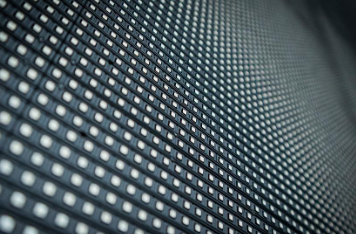UV laser beam splitters have become indispensable tools in the world of laser technology, significantly enhancing various laser applications such as solar panel production, PCB drilling, and large-area surface texturing. In this article, we will explore the unique contributions of UV beam splitters to each of these domains.
what are UV beam splitters?

Diffractive UV laser beam splitters are transmission grating on fused silica that generate an ordered array of beams with customizable angles of separation, determined by the design of the element. Such arrays can be one dimensional lines of spots, two dimensions square or hexagonal arrays, even polka dot beam splitter patterns are possible! These diffractive UV beam splitters have clear advantages compared to other types of beam splitters- they can split to any number of beams, at controlled, small separation angles and have high LDT suitable for high power UV lasers.
Advantages of diffractive UV beam splitters
- Not sensitive to centration of the beam
- Insensitive to beam size
- Weak sensitivity to input angle, up to ~10 deg
- Near zero angular tolerances
In the following section we review UV beam splitter use in various industrial laser beam shaping applications.
UV Beam Splitters Applications in Solar Panel Production
In solar panel production, UV beam splitters based on diffractive transmission gratings shine by increasing throughput in scribing and cutting processes.
Unlike conventional beam splitters, their ability to split laser beams into an array of beams simplifies and expedites the scribing and cutting of photovoltaic materials. By simultaneously processing multiple areas of the solar panel, these beam splitters significantly boost production efficiency, leading to cleaner cuts, reduced material wastage, and ultimately higher solar panel yields. They are often combined with beam shapers to generate an array of shaped square or rectangular spot, suitable for precise scribing.
UV Beam Splitters in PCB Drilling
In the realm of PCB drilling, UV beam splitters are deployed to drill multiple identical holes efficiently.
Diffractive transmission gratings allow for the precise splitting of laser beams, enabling simultaneous drilling at multiple locations on the PCB. This approach significantly accelerates the drilling process, ensuring consistency in hole placement and diameter across the board. The result is a high-quality printed circuit board with improved production speed and accuracy. Another application is drilling large holes with a multi-spot circle DOE – this is a UV beam splitter that generates a circle of spots that can be rotated by rotating the DOE, enabling fast drilling with low kerf loss.
UV Beam Splitters for Large-Area Surface Texturing:
One of the most intriguing applications of diffractive UV beam splitters lies in large-area surface texturing. Unlike regular beam splitters, these advanced optical components called DLITE splitters enable the simultaneous texturing of extensive areas without the need for time-consuming point by point scanning.
This capability is especially crucial in industries where surface texturing is employed for various purposes, such as enhancing adhesion and generating diffusing or hydrophobic surfaces in glass. With diffractive beam splitters, manufacturers can achieve precise and uniform surface texturing across large surfaces, saving time and resources while maintaining the highest quality standards.
Conclusion:
UV beam splitters, based on diffractive transmission gratings in fused silica, are transforming laser applications across industries. Whether it’s increasing throughput in solar panel production, expediting PCB drilling, or achieving large-area surface texturing with good speed and quality, these optical components are revolutionizing processes, boosting efficiency, and driving innovation in laser technology. Their adaptability and precision make them indispensable tools in the quest for higher productivity and superior quality.
TL;DR:
What are UV beam splitters
Diffractive beam splitters are diffractive optical components (DOEs) that split an incoming UV laser beam into an array of sub-beams with controlled separations. When focused by a lens, this translates into an array of spots on the processed surface.
What types of beam splitting are possible with UV beam splitters?
Diffractive beam splitters can generate one dimensional arrays, two dimensional arrays (both rectangular and hexagonal), circles of spots and every other types of pattern needed for the process.
What are the advantages of diffractive UV beam splitters?
UV beam splitters have near absolute angular accuracy, can generate any pattern, have high LDT and are insensitive to tolerances such as centration, beam size and small tilts.
In what applications is UV beam splitting used?
Beam splitting is used to increase throughput in many industrial UV laser applications including surface texturing, PCB drilling and solar panel scribing.

